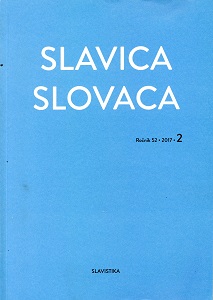Historické a kultúrne kontexty slovenských nárečí v Srbsku I.
Historical and Cultural Contexts of Slovak Dialects in Serbia I
Author(s): Marína HríbováSubject(s): Language studies, Historical Linguistics, Sociolinguistics
Published by: Slavistický ústav Jána Stanislava Slovenskej akadémie vied
Keywords: Slovak dialects; Serbia; mother tongue territory; linguistic and historical-cultural environment; influence of surrounding languages;
Summary/Abstract: The paper deals with historical and cultural contexts of Slovak dialects developed in the Slovak language community in Serbia. Providing information about the history of the arrival of the Slovak ethnic group in the Lower Land and the process of their coloniza-tion of the territory of Vojvodina, we deal with the issue of the formation of the enclave and development of their dialects in a new linguistic and historical-cultural environment. We also briefly mention their place within the context of Slovak dialects. First Slovak immigrants appeared on the territory of today’s Serbia two hundred and seventy years ago. Gradually, they have become an integration element of a new environment being different from the previous one by several historical, social, economic and cultural given conditions. Their dialects brought in different time from different territories of their old homeland gave way to various changes in the conditions of first a lengthy migration and later an ethnic, religious and cultural symbio-sis, making the given language variety peculiar and more differentiated compared to its source forms. Further development of dialects, that were a significant presupposition for maintaining of the Slovak community within a different ethnic environment, continued in a specific way that was different from the conditions on the mother tongue and ethnic territory. By being formed under the influence of the foreign language environment and by merging of the dialects brought from the common homeland they have gradually obtained the qualities not allowing their total identification with the dialect systems on the continuous Slovak language territory. A direct relation-ship with the dialects of the original homeland is best reflected in the dialects of the localities populated within the first colonization wave, while the example of other localities provides a better explanation of the processes of their changes in the minority Slovak environment. Those dialects have the character of the dialects of the individual areas on the original territory, but many of their ele-ments existing in another structure rank them to the dialect complex of the Lower Land.
Journal: Slavica Slovaca
- Issue Year: 52/2017
- Issue No: 02
- Page Range: 133-149
- Page Count: 17
- Language: Slovak

